Thanks to internet quizzes, you probably know, among other things:
- Which Lord of the Rings character you are.
- Which Hunger Games district you’re from.
- Which Disney prince you would be matched with (I got John Smith, but was hoping for Prince Eric).
You might even know which of Carl Jung’s 12 archetypes you identify with.
But what if we asked you to answer these questions about your customers and their behavior?
Which Lord of the Rings character would they be?
As silly as that sounds, there are concrete benefits in being able to identify the more abstract values your target audience identifies with. How well do you actually know your customers?
Demographics (age, location, gender, etc.) tell you what a person is – a 28-year-old female marketing director in Seattle, for instance). But they say very little about what they value, or more fundamentally, who they are and who they want to be.
For that, you need to create customer archetypes.
What Is a Customer Archetype?
Think of it as a personality type or “role” that your customer identifies with.
Are they a rebel without a cause? An idealistic heroine?
The purpose isn’t so much to typecast your buyers as it is to create accurate representations of their motivations and aspirations based on observed behavior.
Perhaps the simplest way to explain this is as a question: What role might your target consumer be trying to fulfill by using your product or service?
Most people are trying to be something – a creative mover and shaker, a data-detective extraordinaire, an IT wizard. If you can play into those desires with your marketing, you can connect with your target audience on a much deeper level.
Subscribe to
The Content Marketer
Get weekly insights, advice and opinions about all things digital marketing.
Thank you for subscribing to The Content Marketer!
The Difference Between Customer Archetypes and Customer Personas
A customer persona is a more concrete representation of your ideal customer, or a member of your target audience. It is a fictional character with a name, an age, a job title and interests. If you were to meet someone for the first time, you may come up with their persona — that they live in New York City, they’re an architect, age 34 and hold a mid-level position at the firm. However, an archetype level of knowing this person would reveal that they are married, have a child, work on community support projects and hope to develop a department for this at the firm.
Here is an example of Brafton’s reader persona:
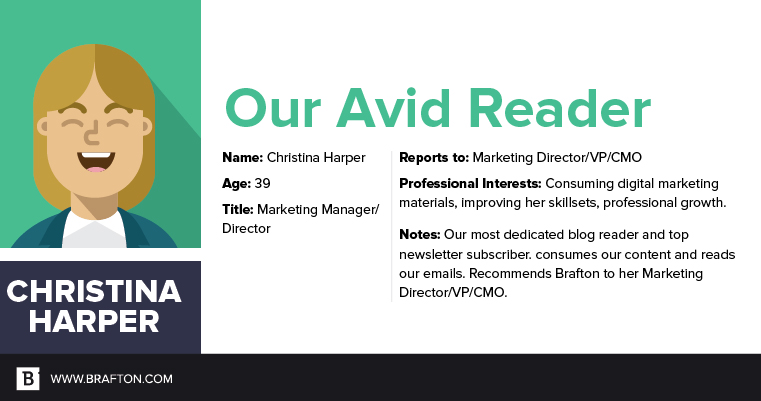
A customer or buyer persona is just a specific type of persona. It’s someone who actually has purchasing power. Here’s an example of 1 of our buyer personas:
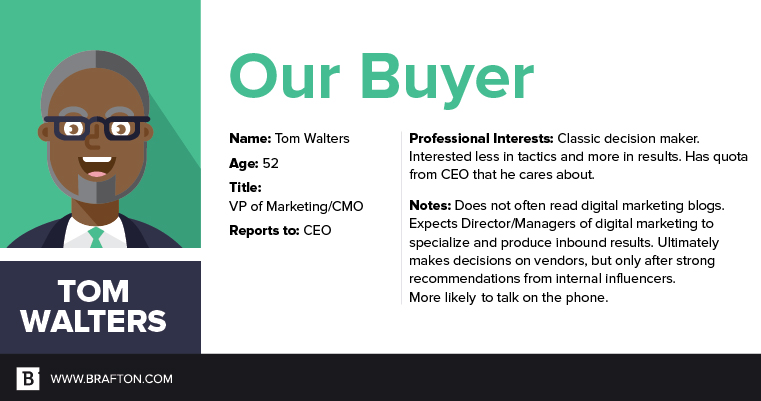
Where Does an Audience Profile Fit Into All of This?
Notice how Tom Walters has a specific age and title? Well, let’s say we took away his name, his title and his gender. Let’s say we also gave him/her an age range, say 30-55, and in place of a job title, we added a type of business he/she might be affiliated with. Now, let’s add a few possible job titles he/she might have, along with some general interests, pain points, publication preferences, etc.
You’re left with something like this:
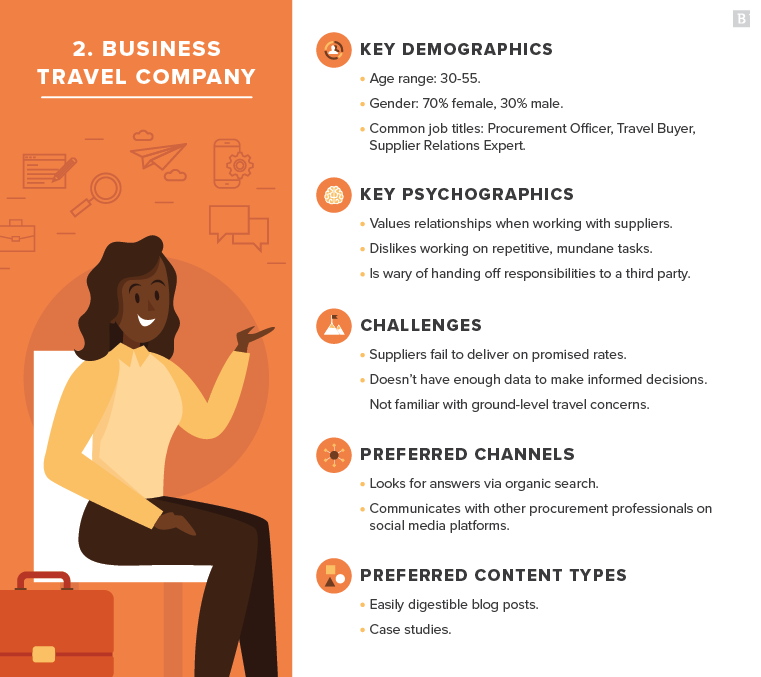
This is an example of an audience profile. It is less specific than a persona, and more detailed than an archetype.
Does Every Brand Need to Build a Customer Archetype?
Connecting with your audience is essential to successfully improving your brand. Artificial intelligence (AI) is helping marketers to automate personalization across all customer touch points. With this technology, buyers are growing more accustomed to their favorite brands curating their online experience as if they were shopping in a store — and while in the store, their experience is even more personal.
AI works best when the right data is available and it can learn from it. Building out customer archetypes for your brand can support a greater connection to your buyers, build brand loyalty and help ensure an exceptional experience for your customers.
10 Customer Archetype Examples
Want to know more about what customer archetypes could look like? Here are 10 examples to understand user behavior better:

The hero archetype: Luke Skywalker. Wonder Woman. Spider-Man. These characters long to do more, and are inherently good. As a person, the hero archetype sets themselves apart from the crowd. They will take on a job that no one wants to take and have ambitions and goals they’re working toward, and their behavior often leads others to those same goals. They’re looking to prove their worth by doing bigger and better things.

The innocent: The innocent brand customer segmentation prefers direct, gimmick-free language. Over-handed messaging or guilt-tripping is a surefire way to encourage the opposite of brand loyalty. (Mortal enemies? Could be!) Your message here should be simple and foster trustworthiness and bias toward disclosing information.
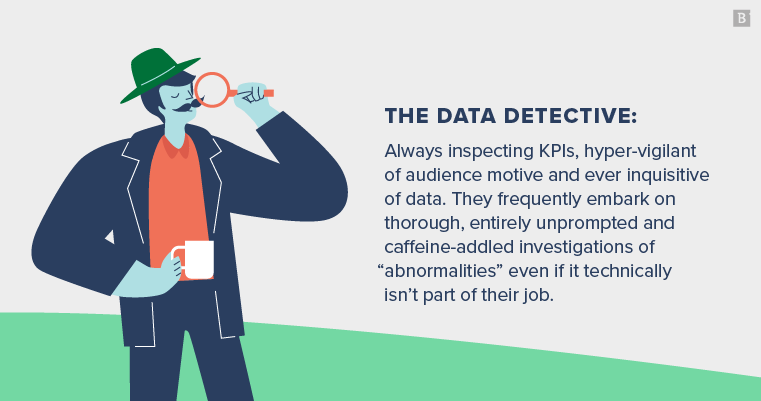
The data detective: Always inspecting KPIs, hyper-vigilant of audience motive and ever inquisitive of data. They frequently embark on thorough, entirely unprompted and caffeine-addled investigations of “abnormalities” even if it technically isn’t part of their job.
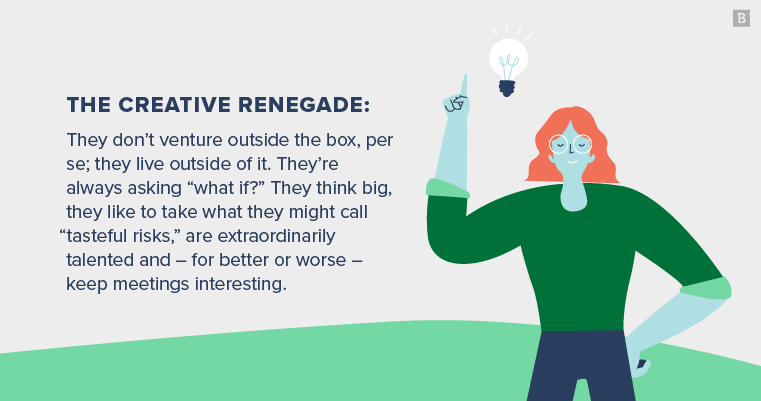
The creative renegade: They don’t venture outside the box, per se; they live outside of it. They’re always asking “what if?” They think big, they like to take what they might call “tasteful risks,” are extraordinarily talented and – for better or worse – keep meetings interesting.
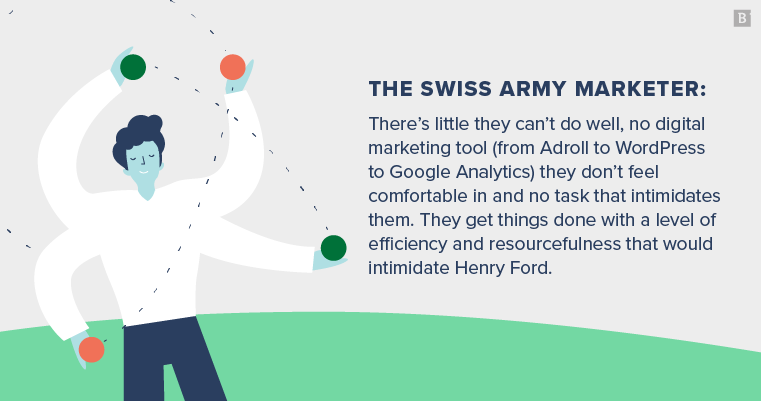
The Swiss Army marketer: There’s little they can’t do well, no digital marketing tool (from Adroll to WordPress to Google Analytics) they don’t feel comfortable in and no task that intimidates them. They get things done with a level of efficiency and resourcefulness that would intimidate Henry Ford.
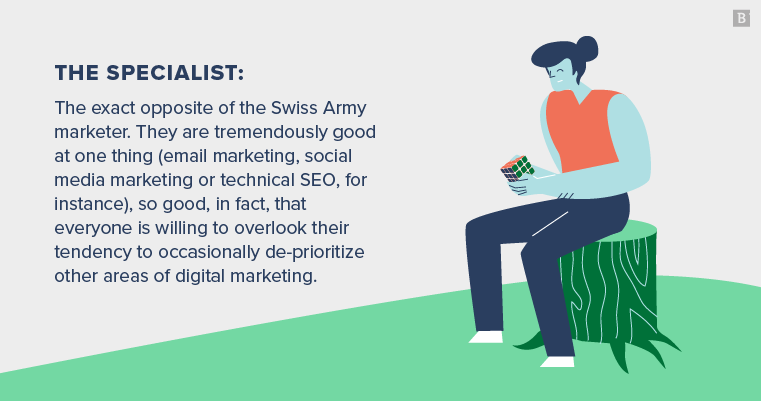
The specialist: The exact opposite of the Swiss Army marketer. They are tremendously good at one thing (email marketing, social media marketing or technical SEO, for instance), so good, in fact, that everyone is willing to overlook their tendency to occasionally de-prioritize other areas of digital marketing.
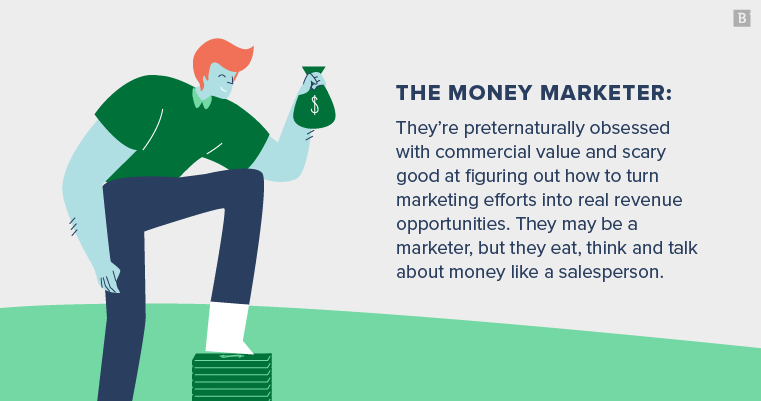
The money marketer: They’re preternaturally obsessed with commercial value and scary good at figuring out how to turn marketing efforts into real revenue opportunities. They may be a marketer, but they eat, think and talk about money like a salesperson.
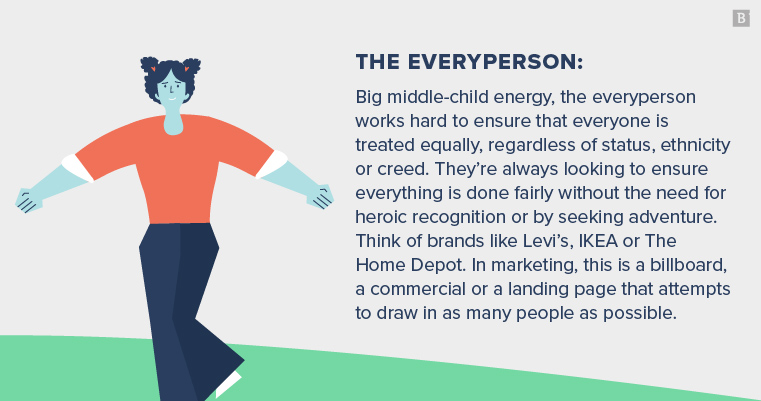
The everyperson: Big middle-child energy, the everyperson works hard to ensure that everyone is treated equally, regardless of status, ethnicity or creed. They’re always looking to ensure everything is done fairly without the need for heroic recognition or by seeking adventure. Think of brands like Levi’s, IKEA or The Home Depot. In marketing, this is a billboard, a commercial or a landing page that attempts to draw in as many people as possible.
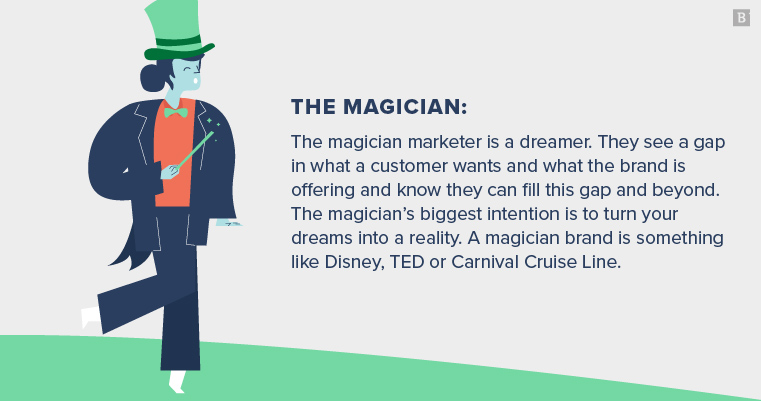
The magician: The magician marketer is a dreamer. They see a gap in what a customer wants and what the brand is offering and know they can fill this gap and beyond. The magician’s biggest intention is to turn your dreams into a reality. A magician brand is something like Disney, TED or Carnival Cruise Line.

The explorer: This is someone who emphasizes adventure and self-realization. As a customer, they’re committed to finding the best brand, and along the way do not have high regard for brand loyalty. They’ll do just about anything to avoid boredom. Think of brands like Patagonia and REI, or Red Bull and Harley Davidson.
Notice how there aren’t any positions, ages, genders, salary, education level, etc. listed here? Archetypes are bigger than job titles.
They’re segments about who a customer identifies as — or hopes to identify as.
Which Archetype Are My Customers?
When it comes to creating the ideal market segmentation for your business, there is no one size fits all.
Some trial and error may even be necessary as you figure out the best way to segment your target audience and your customers. Factors such as what data you have available and how much cooperation you have between your sales and marketing team will influence how you build out each customer segment. So will the industry, your posture in the market, etc.
Giving Your Brand a Voice
Creating customer archetypes can help you decide how to best tell your brand story and articulate your value proposition. Your tone of voice will help give your brand legs, a brand personality and a goal for customers to connect with — and one that connects with them.
When you think of the customer journey, you need to think of it as a storyteller would.
Who is the protagonist and what is their motivation? How does your brand serve that motivation, and ultimately help the protagonist be the hero, data-detective, explorer or creative genius that they strive to be?
Knowing specific pain points is useful for creating content, but to connect with your audience on a deeper level, you need to understand their core professional and/or personal motivations.
Creating customer archetypes can help you do that.
Last but Not Least: How Do You Make a Customer Archetype?
Unlike personas and audience profiles, customer archetypes are less directly dependent on demographic data. Much like a horoscope publisher, you need to think about themes and motivations more than job titles and locations.
Granted, you can use data from Google Analytics, Google Trends, Search Console and your CRM (including job titles) as part of your process for figuring out what your customers care about; for instance, are there common themes that you should be mindful of?
But the most valuable information will be qualitative. Focus on what business or personal goals you’ve helped customers achieve in the past. That doesn’t mean pain points that you’ve alleviated or opportunities you’ve helped them seize, but what long-term goals you’ve helped your customers get closer to?
Ask yourself:
- What is the bigger-picture outcome of those successes?
- How have you satisfied them as a professional or a person?
- Who have you helped them impress?
- Who have you helped them help?
- How have you helped them grow professionally or personally?
These are some of the toughest questions to answer – and depending on your niche, some may be more relevant than others.
But if you can answer them about your different types of customers, you can effectively create a template for how you define your audience on an emotional level – one that goes deeper than ROI and efficiency.
And those are the toughest ties to sever.
Editor’s Note: updated August 2023.





